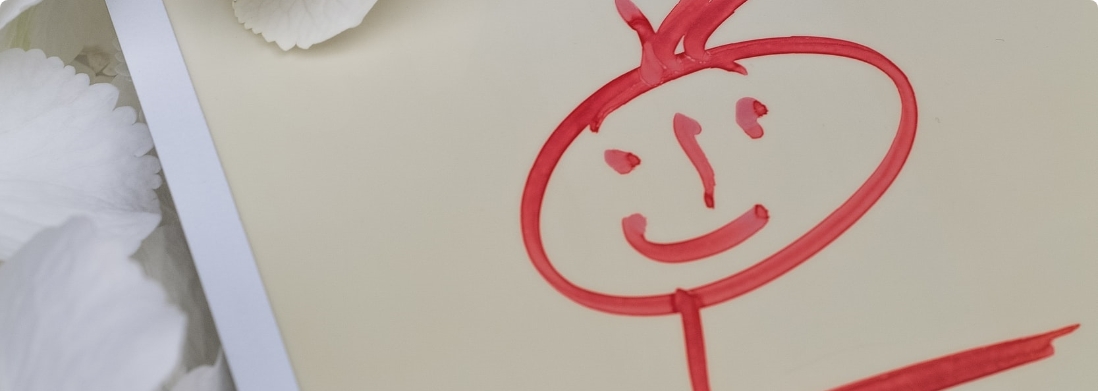Oh, you’re an art therapist, so you work with kids, right?
Are you analyzing me? What does this mean?
I can’t draw… I’m not an artist.
What is Art Therapy?
“Art Therapy is an integrative mental health and human services profession that enriches the lives of individuals, families, and communities through active art-making, creative process, applied psychological theory, and human experience within a psychotherapeutic relationship” (The American Art Therapy Association, 2017). In short, art therapy is a therapy using the art process to create, explore, and discover one’s emotions, problems, and goals.
Process over Product
Contrary to popular belief, art therapy is not just for kids and you do not have to be an artist to participate in art therapy! I may sound like a broken record to my clients as I repeat the phrase: “art therapy is about the process, not about the product”. Is it nice when we create something that has a nice aesthetic? Of course! However, sometimes we just need to create to create. Art therapy is different than creating something pretty to frame on your wall. We may need to use lines, shapes, and colors to express anger, grief, sadness, frustration– or even joy. Art allows us to work through and explore difficult emotions, grapple with inner conflicts, reduce anxiety, and increases self-esteem through empowerment of choice.
Novel Ways of Thinking, Feeling, and Processing
Engaging in the art process helps us to see things in a different way. As adults, often the last time we held a crayon or marker was in grade school—this alone is an exciting experience for our adult selves. I have seen clients allow themselves to become playful and curious as well as see the world and their problems through a new set of child-like eyes. Research shows that art enhances brain function, impacting brain wave patterns and emotions, the nervous system, and can actually increase serotonin levels (our “feel-good” hormone that stabilizes our mood). Art has the advantage of allowing for new ways of thinking and experiencing the world. It takes what may be an abstract thought, concept or feeling, and makes it concrete and provides a new perspective we may not have had previously.
Nonverbal Communication
Sometimes words are not enough. Alexithymia is when one lacks the words for emotions. Art therapy offers a possibility to communicate through art in a symbolic and metaphoric way, while giving shape to experiences and emotions of what cannot yet be verbalized. Engaging in the art process also allows for kinesthetic movement and stimulates both sides of the brain. Mainly, art activates the right side of the brain, which is where memories, and more specifically trauma, is stored. Because a traumatic experience is encoded through the senses and your thinking brain goes offline, art can be a helpful tool in accessing these types of memories, emotions, and body sensations that accompany them. Once a memory has been uncovered, this allows your logical brain to begin to integrate using verbal language. The outward manifestation and externalization of artwork can serve as a visual documentation tool to track problems, issues, and strengths over time. It serves as a tangible reference point and conversation starter, not only between the client and the artwork, but for therapist and client.
Self-expression & Self-awareness
Art is malleable; you can cover, tear, replace, cut, and you are allowed to start over. Other than safety, there are no real rules or limits to what can be done. This gives the artist a sense of freedom and empowerment to make mistakes, explore decisions, and change your mind. The art process can also assist in building self-awareness. Art can bring unconscious material to the forefront. Often times when working with clients, what comes up in the art is surprising to its creator. One may say, “I’m not sure why I drew that” or “I can’t believe I just did that.” Art becomes an extension of its creator and takes on a life of its own. In this way, you are able to ask it questions, dialogue with it, and become curious as to the message it is trying to tell you.
Art as Therapy
While art therapy is more than just engaging with art materials, oftentimes that alone is therapeutic. Art can help us cope with anxiety and stress. For instance, clients find catharsis through repetitive actions through kneading clay, knitting, weaving, or simply coloring in a mandala. Engaging in the art process can lead to a flow state, also known as ‘being in the zone’ or being fully engaged, energized, and focused in the enjoyment of the process. A main reason we seek therapy is to improve or restore our balance and functioning. Reaching these states can lead to a sense of relaxation and meditation-like experience, building our psychological resilience and sense of well-being.
Art therapy is not only fun and different, but it is also informative to your treatment and goals. It can even hold information that your conscious mind may not yet be aware of. Remember, you do not have to be an artist, creative, or be a kid to reap the benefits. Once we learn to let go of expectations for ourselves and enjoy the process, that’s where the change begins!
For more information on Art Therapy please visit The American Art Therapy Association.



